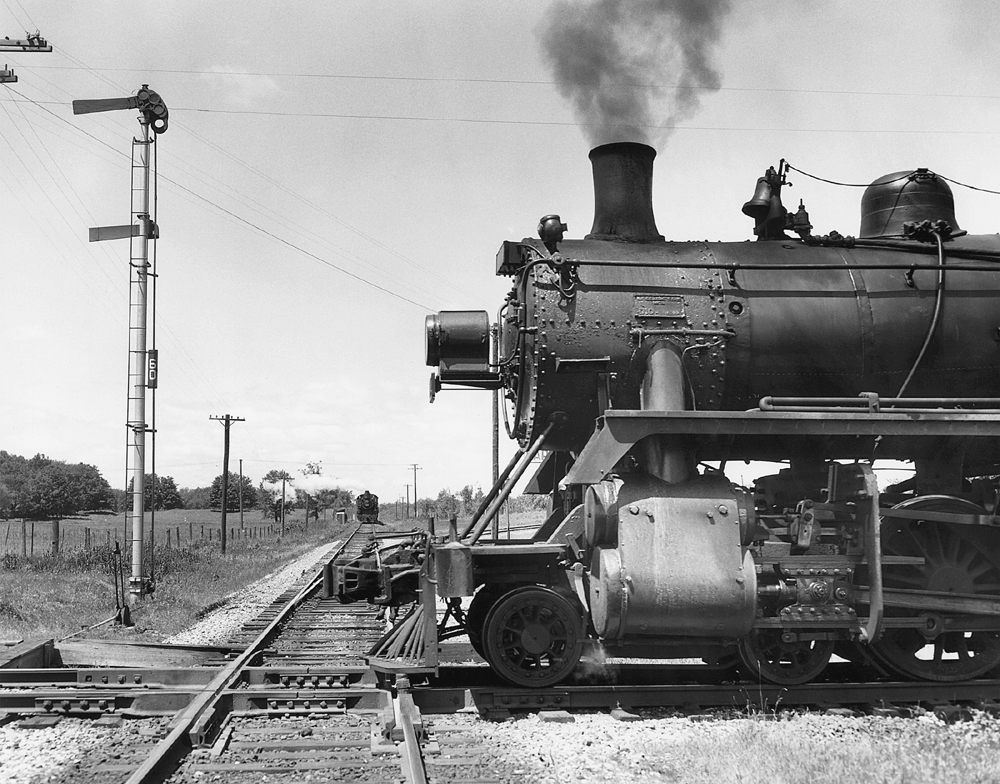
Don Wood photo, courtesy of Ian Wilson

Don Wood photo, courtesy of Ian Wilson
Semaphore No. 60 holds C.N.Rys. Pacific 5563 with southbound ballast extra at the stop sign on Southampton Subdivision while C.P.Ry. Ten Wheeler 1004 crosses Owen Sound Subdivision with the Teeswater Mixed. The Owen Sound Subdivision continues through the diverging (righthand) leg of the turnout north of the diamond.
The non-interlocked crossing was controlled by pipe-connected levers; one for the C.N.Rys. (appearing in the left of photo) and one for the C.P.Ry. It was the responsibility of the C.P.Ry. crew to clear the signal for their train then restore the signals for C.N.Ry. (see Beaumont-1977, p. 92).
The crossing was non-interlocked in the sense that signals 59 (northward) and 60 (southward) would both indicate "Proceed" when the crossing was lined for C.N.Rys. (see Wilson-2001, pg. 129). Presumably this was also the case for the C.P.Ry. (but no photographic evidence has been found). A conflicting route would be prevented through simple interlocking (i.e., one lever could be reversed only if the other was normal). Prevention of an opposing route would be managed through time table and train order operation.
Signals are lower-quadrant, two arm semaphores. The upper arm is operative and the lower arm is fixed. Aspects would be Red over Red (Rule 601a, Stop) and Green over Red (Rule 601n, Proceed). Based on photographs, the C.N.Rys. used 90° (straight) down for green while the C.P.Rys. used 60° down.
Rule 98 requires: Trains or engines must stop at the stop sign at non-interlocked railway crossings at grade and at non-interlocking drawbridges and not proceed until the proper signal has been given for that purpose.
Location: Owen Sound M6.03